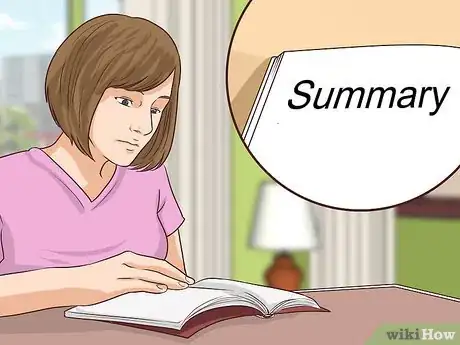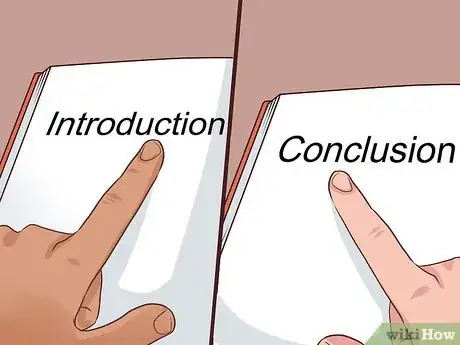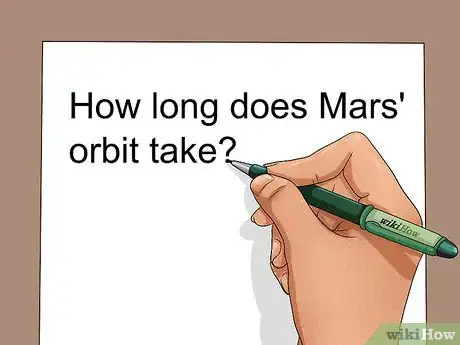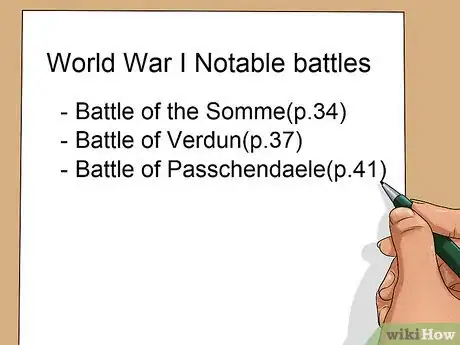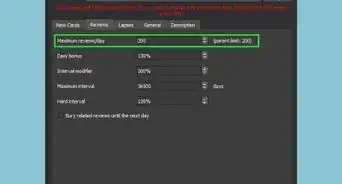This article was co-authored by Christopher Taylor, PhD. Christopher Taylor is an Adjunct Assistant Professor of English at Austin Community College in Texas. He received his PhD in English Literature and Medieval Studies from the University of Texas at Austin in 2014.
There are 10 references cited in this article, which can be found at the bottom of the page.
This article has been viewed 42,554 times.
The Preview, Question, Read, Summary, Test or PQRST Method is an effective way to learn material and retain it in your memory. This technique helps in prioritizing the information in a way that relates directly to how you might be asked to use that information in an exam. To follow this method, preview material to get the bigger picture of what is being studied, formulate questions to answer while you read, read with intent, summarize material in your own way, and test yourself on what you have studied.
Steps
Previewing the Material
-
1Check the table of contents. To get acquainted with the material you are going to be studying, check out the table of contents in a syllabus, textbook, or course pack. Note how the content is divided, and what the major topics are. Note how ideas are mapped out, and what concepts have more pages to devoted to them.[1]
- For example, a history textbook will likely be divided by era, with subtitles listing important battles, elections, or other events of note.
-
2Read headings, summaries, or keywords. To get a sense of what you are studying before you begin to read in-depth, scan the course material for summarizing text. Summaries could include topic headings, bolded keywords, or chapter summaries.) These parts should offer a general idea of what the chapter or section will cover and frame further reading of the content.[2]
- In some study materials, pictures, maps, or diagrams may serve the same purpose.
Advertisement -
3Scan the first and last sentences of paragraphs. For further insight, or if no table of contents, headings, or other summaries are available, read the first and last sentences of each paragraph. Reading the introduction and conclusion of each paragraph will give you a quick overview of its content and help you trace the chain of ideas presented. Identify what the subject matter is, as well as the approach taken to the subject within the text (e.g. a comparative study or historical overview).[3]
Generating Questions About the Subject Matter
-
1Turn subject headings into questions. Formulate questions that you would like to be able to answer once you have finished studying. Start by using subject headings or subheadings to formulate questions. For instance, turn the heading, “Einstein’s Theory of Relativity” into the question, “What is Einstein’s Theory of Relativity?”[4]
-
2Generate questions based on your preview. Write down any questions you may have after your initial preview of the material to be studied. Include as few or as many questions as you have based of your understanding of the content. If the text that you are studying includes study questions, add them to the list.[5]
- For instance, your preview of an astronomy article might lead you to ask questions like, "how long does Mars' orbit take?"
-
3Write questions based on your previous knowledge of the topic. Use the limited knowledge (or pre-conceived notions) that you already have about a topic to write questions. The questions should be geared towards clarifying the truth about the subject (e.g. "Is it true that bears hibernate for half of the year?"). As you study, these questions will be answered, and misconceptions debunked.[6]
Reading Through the Reference Material
-
1Read in clusters. As you start to study, be mindful to read for ideas rather than keywords – do this by focusing on clusters of words while reading rather than single words. This effort reduces the number of times your eyes stop while reading, and increases comprehension by making you read with more direct intent. Be sure to keep this up throughout your studying; “cluster reading” can increase the speed of your reading.[7]
- For example, read through an entire paragraph about an anaconda being able to eat an impala, instead of stopping after the first sentence stating that fact.
-
2Highlight important things. Read through paragraphs with the intention of highlighting the important points of each. Each paragraph in a text contains one main idea and other, supporting ideas. Highlight the main point of each paragraph so you can refer back to it easily without having to skim through all of the content again (e.g. in a paragraph about the status of the snow leopard, highlight the sentence, "Due to climate change, snow leopards are going extinct.")[8]
- Jotting down notes in the margins of your study material is also a good way to note important details.
-
3Evaluate your understanding. Choose an interval at which to stop reading and evaluate your understanding of the content you just studied (e.g. every ten minutes, every chapter). Ask yourself if you’re learning anything from the text, or if you’ve absorbed all of the details you read. If necessary, reread the text.[9]
Summarizing or Self-Reciting the Material
-
1Write notes for yourself. Based on what you’ve read, write notes for yourself using your questions, the answers to them, and other pertinent content that struck your interest. Use the format of note-taking that suits you best (e.g. lists in point form.) Be sure that your notes are legible and coherent enough to refer to easily later on.[10]
- If you understand things better in list form, for instance, make a list of the most notable battles during WWI when writing your history notes.
-
2Record page numbers and references within your notes. While you write your notes, record the page numbers of the source material that you are referencing. Having this information will allow you to go back to the source easily when you review your notes. If any pertinent maps, charts, pictures, or other visual aids relate to part of your notes, write down the page numbers for those as well.[11]
-
3Recite notes in your head or out loud. In addition to taking written notes, summarizing the content you’ve read (either out loud or in your head) is an excellent way to process and retain the information. Organize your thoughts as if you were giving a lecture or oral presentation about the subject, and make the “lesson” as comprehensive as possible.[12]
- By formulating the material that you’ve studied in the style of a presentation, you make the content more engaging and understandable for yourself as well as your imaginary audience.
Testing Yourself on the Material
-
1Read and answer the list of questions you wrote. Answer the questions that you compiled for yourself as comprehensively as you can given what you’ve managed to learn from your studying process. Do not consult your notes until after you’re done testing yourself on the study material. Note the questions you got wrong or didn’t answer and focus extra attention on the content related to them.[13]
-
2Use mnemonic devices. Mnemonic devices are memory techniques that allow your brain to encode and retain information. These study tricks are essentially shortcuts that allow you to recall things, in the form of acronyms, images, rhymes, songs, or other memorable devices. Create or use mnemonic devices for the content that you have more difficulty remembering when studying.[14]
- For example, a popular mnemonic device for students learning history is, “in fourteen hundred and ninety-two, Columbus sailed the ocean blue”, used to remember the year of Christopher Columbus’ famous expedition.
-
3Review learning material. Based on the sections that you struggle with when testing yourself, review your study material. Reread your notes and, if necessary, re-write notes for the content that you have trouble remembering to reinforce your understanding of it. Continue testing yourself on the material until you feel confident that you've learned it.[15]
References
- ↑ http://www.nbss.ie/sites/default/files/publications/mm_pqrst_student_booklet.pdf
- ↑ http://scf.edu/content/PDF/ARC/How_to_study_a_reading_assignment.pdf
- ↑ http://scf.edu/content/PDF/ARC/How_to_study_a_reading_assignment.pdf
- ↑ http://www.uccs.umn.edu/oldsite/lasc/handouts/PQRST.html
- ↑ http://www.nbss.ie/sites/default/files/publications/mm_pqrst_student_booklet.pdf
- ↑ http://www2.eit.ac.nz/library/ls_guides_pqrstmethod.html
- ↑ http://www.uccs.umn.edu/oldsite/lasc/handouts/PQRST.html
- ↑ http://www.uccs.umn.edu/oldsite/lasc/handouts/PQRST.html
- ↑ http://www.uccs.umn.edu/oldsite/lasc/handouts/PQRST.html
- ↑ http://www2.eit.ac.nz/library/ls_guides_pqrstmethod.html
- ↑ http://www2.eit.ac.nz/library/ls_guides_pqrstmethod.html
- ↑ http://www.uccs.umn.edu/oldsite/lasc/handouts/PQRST.html
- ↑ http://www.lethbridgecollege.net/elearningcafe/images/stories/pdf/pqrst.pdf
- ↑ http://psychcentral.com/lib/memory-and-mnemonic-devices/
- ↑ http://www.lintech.org/study-skills/The_PQRST_method.html

